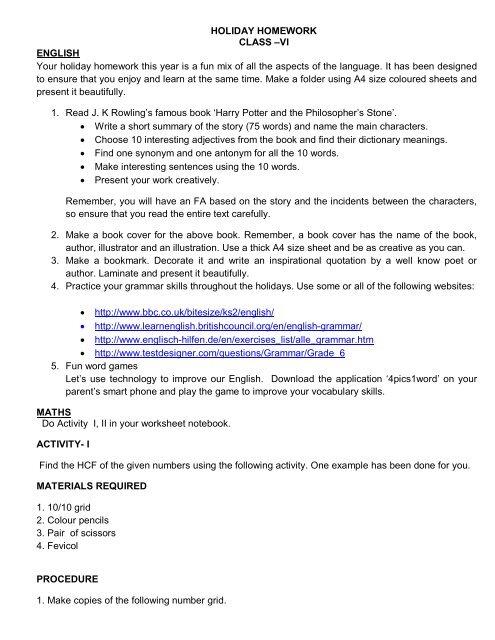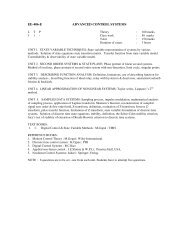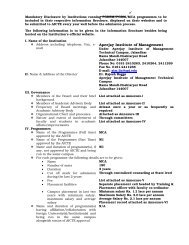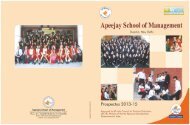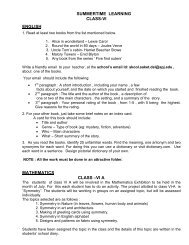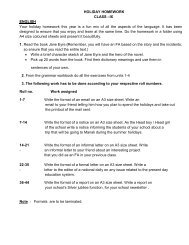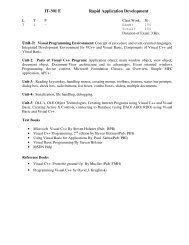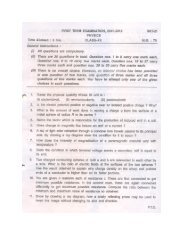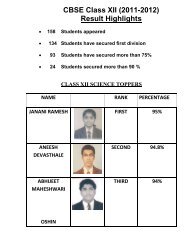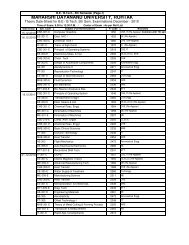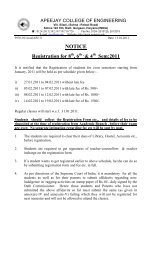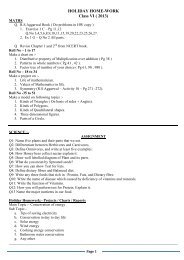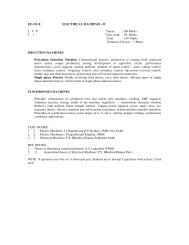HOLIDAY HOMEWORK CLASS âVI ENGLISH Your holiday ...
HOLIDAY HOMEWORK CLASS âVI ENGLISH Your holiday ...
HOLIDAY HOMEWORK CLASS âVI ENGLISH Your holiday ...
You also want an ePaper? Increase the reach of your titles
YUMPU automatically turns print PDFs into web optimized ePapers that Google loves.
<strong>HOLIDAY</strong> <strong>HOMEWORK</strong><br />
<strong>CLASS</strong> –VI<br />
<strong>ENGLISH</strong><br />
<strong>Your</strong> <strong>holiday</strong> homework this year is a fun mix of all the aspects of the language. It has been designed<br />
to ensure that you enjoy and learn at the same time. Make a folder using A4 size coloured sheets and<br />
present it beautifully.<br />
1. Read J. K Rowling’s famous book ‘Harry Potter and the Philosopher’s Stone’.<br />
Write a short summary of the story (75 words) and name the main characters.<br />
Choose 10 interesting adjectives from the book and find their dictionary meanings.<br />
Find one synonym and one antonym for all the 10 words.<br />
Make interesting sentences using the 10 words.<br />
Present your work creatively.<br />
Remember, you will have an FA based on the story and the incidents between the characters,<br />
so ensure that you read the entire text carefully.<br />
2. Make a book cover for the above book. Remember, a book cover has the name of the book,<br />
author, illustrator and an illustration. Use a thick A4 size sheet and be as creative as you can.<br />
3. Make a bookmark. Decorate it and write an inspirational quotation by a well know poet or<br />
author. Laminate and present it beautifully.<br />
4. Practice your grammar skills throughout the <strong>holiday</strong>s. Use some or all of the following websites:<br />
http://www.bbc.co.uk/bitesize/ks2/english/<br />
http://www.learnenglish.britishcouncil.org/en/english-grammar/<br />
http://www.englisch-hilfen.de/en/exercises_list/alle_grammar.htm<br />
http://www.testdesigner.com/questions/Grammar/Grade_6<br />
5. Fun word games<br />
Let’s use technology to improve our English. Download the application ‘4pics1word’ on your<br />
parent’s smart phone and play the game to improve your vocabulary skills.<br />
MATHS<br />
Do Activity I, II in your worksheet notebook.<br />
ACTIVITY- I<br />
Find the HCF of the given numbers using the following activity. One example has been done for you.<br />
MATERIALS REQUIRED<br />
1. 10/10 grid<br />
2. Colour pencils<br />
3. Pair of scissors<br />
4. Fevicol<br />
PROCEDURE<br />
1. Make copies of the following number grid.
1 2 3 4 5 6 7 8 9 10<br />
11 12 13 14 15 16 17 18 19 20<br />
21 22 23 24 25 26 27 28 29 30<br />
31 32 33 34 35 36 37 38 39 40<br />
41 42 43 44 45 46 47 48 49 50<br />
51 52 53 54 55 56 57 58 59 60<br />
61 62 63 64 65 66 67 68 69 70<br />
71 72 73 74 75 76 77 78 79 80<br />
81 82 83 84 85 86 87 88 89 90<br />
91 92 93 94 95 96 97 98 99 100<br />
Suppose we have to find the HCF of 24, 28 and 36.<br />
1. Consider the number 24. Its factors are 1,2,3,4,6,8,12 and 24<br />
2. Shade the numbers with yellow colour in one grid.<br />
1 2 3 4 5 6 7 8 9 10<br />
11 12 13 14 15 16 17 18 19 20<br />
21 22 23 24 25 26 27 28 29 30<br />
31 32 33 34 35 36 37 38 39 40<br />
41 42 43 44 45 46 47 48 49 50<br />
51 52 53 54 55 56 57 58 59 60<br />
61 62 63 64 65 66 67 68 69 70<br />
71 72 73 74 75 76 77 78 79 80<br />
81 82 83 84 85 86 87 88 89 90<br />
91 92 93 94 95 96 97 98 99 100<br />
3. Now shade the factors of the number 28 in blue colour as shown below in an another grid . They are<br />
1,2,4,7,14 and 28
1 2 3 4 5 6 7 8 9 10<br />
11 12 13 14 15 16 17 18 19 20<br />
21 22 23 24 25 26 27 28 29 30<br />
31 32 33 34 35 36 37 38 39 40<br />
41 42 43 44 45 46 47 48 49 50<br />
51 52 53 54 55 56 57 58 59 60<br />
61 62 63 64 65 66 67 68 69 70<br />
71 72 73 74 75 76 77 78 79 80<br />
81 82 83 84 85 86 87 88 89 90<br />
91 92 93 94 95 96 97 98 99 100<br />
4. Find the factors of the number 36 and shade them in green colour in the third grid. They are<br />
1,2,3,4,6,9,12,18,36.<br />
1 2 3 4 5 6 7 8 9 10<br />
11 12 13 14 15 16 17 18 19 20<br />
21 22 23 24 25 26 27 28 29 30<br />
31 32 33 34 35 36 37 38 39 40<br />
41 42 43 44 45 46 47 48 49 50<br />
51 52 53 54 55 56 57 58 59 60<br />
61 62 63 64 65 66 67 68 69 70<br />
71 72 73 74 75 76 77 78 79 80<br />
81 82 83 84 85 86 87 88 89 90<br />
91 92 93 94 95 96 97 98 99 100<br />
5. Find the numbers which are common to all the three grids. They are 1, 2, 4.
6. Observe that the highest number common to all the three grids is 4. Therefore the HCF of 24, 28<br />
and 36 is 4. Using the above activity, find the HCF of the following numbers:<br />
a) 12, 45, 75<br />
b) 18, 54, 81<br />
c) 18, 24, 34<br />
ACTIVITY II<br />
Cross-number Totals<br />
The cross-number puzzle has been filled out using the whole numbers from 6 to 10 exactly once, so<br />
that the total along each line is 23.<br />
III) Practice your mathematical skills by visiting the given webpage and solve questions in the<br />
following links: A.1, A.2, A.3, I.1, I.2, K.1, K.2, K.3 , K.4, K.5<br />
http://www.ixl.com/math/grade-6
IV) Bring articles, amazing facts, riddles, cross-words, recent discoveries in the field of<br />
Mathematics for the school biannual Mathematics newsletter (minimum 2).<br />
SOCIAL SCIENCE<br />
GEOGRAPHY<br />
General Instructions:<br />
1. The whole class is divided into 6 groups.<br />
2. Each group will make a power point presentation on the topic allotted to them.<br />
3. Guidelines are given, for making the power point.<br />
4. Number of slides should not exceed 10.<br />
5. Colour, Font, Text, Pictures should be appropriately used.<br />
6. Use animations, pictures to make your ppt.<br />
7. Reference: Geography Chapter -1,2 and 3.<br />
8. Email your power point presentation at the school email skool.saket.del@apj.edu with the<br />
subject- Social science Holiday Homework for class VI by 'Name of the Student'<br />
VI -A<br />
Group one- AASTHA SHARMA, AAYUSH ANAND, ADVIT GUPTA, AKASH GARG, ADVIT GUPTA, AMISHI<br />
,AKSHAT NAUDIYAL<br />
Celestial Bodies- stars (focus on sun) planets, constellations, natural satellites(focus on moon)<br />
asteroids, meteors, recent meteorite disaster,comets)<br />
Group Two- ANANYA BHAIK, ANIKET PANDA, CHAVI GOEL, DASHMEET KAUR BABRA, DEVISHI,<br />
DEVANSHI MENON,DHARAM RUCHI GIRDHAR<br />
Solar System- planets; their size, distance from the sun, time of revolution and rotation, availability of<br />
water, their natural satellites, and their main features.<br />
Group Three- FAWAZ AHMAD, G.P.V.MRUTHUNAL, JASSICA KAHLON, KUMAR SHASWAT, NAMAN<br />
UPRETI, NAVJYOT BIRDI, NITANSHI GOEL<br />
Earth- interior of the earth with the help of a diagram, rocks found on the earth, (try to collect the<br />
pieces of rocks), major continents and oceans, major mountain ranges, major deserts. Use maps to<br />
show the mentioned features.<br />
Group Four- PRARTHNA ARYA, PRISHA DHATWALIA, RAGHAV, RHEA, RIMA, ROHAN, SAYYAM JAIN<br />
Latitudes and Longitudes- Major latitudes and heat zones of the world, differences between the two,<br />
Longitudes and time-how to measure time, local time , standard time, international date line, formation<br />
and use of grid.
Group Five- SHREYA DUTTA, SUKHMAN, TISHA, SURAJ , VARTIKA VANI, VASUNDHARA, VIDHI<br />
Major landforms of India- Mountains, plains and plateaus.<br />
Define the terms, how are they different from each other (present in a tabular form with the help of<br />
examples) ,their usefulness, name and mark on the political map of India. ( important features only)<br />
Group Six- AVI TIWARI, MEHAR,SHOURYA SHARMA, AKSHAT B, KHUSHI, MUSKAAN, TUSHAR,<br />
CHAITANYA, VISHAL<br />
Maps- origin of maps, instruments used to make a map, types of maps, language of the maps i.e.<br />
signs symbols and colours.<br />
Sibaditya, Rashad, Chavi, JiaRohilla will do the 'ITIHAS' Project and that will be assessed as<br />
their Holiday Homework.<br />
VI-B<br />
Group one- AAYUSH GUPTA, ADITYA BHATTACHARGEE, AMAN KASHYAP, ARUSHI BATRA,<br />
ANIKET CHHETRI, CHITANSHA BATRA, EVA WALIA<br />
Celestial Bodies- stars (focus on sun) planets, constellations, natural satellites(focus on moon)<br />
asteroids, meteors, recent meteorite disaster, comets)<br />
Group Two- FAISAL RAHMAN, GAURI SHARMA, GAUTAM SETHI, HARSHIT MALHOTRA,<br />
HARSHITA AGGARWAL, ILMA RAZI, KESHAV BHARDWAJ<br />
Solar System- planets; their size, distance from the sun, time of revolution and rotation, availability of<br />
water, their natural satellites, and their main features.<br />
Group Three- KUNAL, KUSHA VASUDEVA, LAVANYA , MANAN SURI, NITISHA MEHNA, PAKHI<br />
SIBAL, PARV UPADHYAY<br />
Earth- interior of the earth with the help of a diagram, rocks found on the earth, (try to collect the<br />
pieces of rocks), major continents and oceans, major mountain ranges, major deserts. Use maps to<br />
show the mentioned features.<br />
Group Four- PRANEY SURMA, PRANJAY BHATT, RIYA DHAMA, ROOPANSHI, SAHIL KUMAR,<br />
SAMANYU DASH, SANDEEP MOHANTY<br />
Latitudes and Longitudes- Major latitudes and heat zones of the world, differences between the two,<br />
Longitudes and time-how to measure time; local time , standard time, international date line,<br />
formation and use of grid<br />
Group Five- SARTHAK, SHAURYA SINGH, SHIVAM GUPTA, SHIVOHAM DAGAR, SHREYA<br />
BATRA, SIDAK SINGH, SOURABH GUIN<br />
Major landforms of India- Mountains, plains and plateaus.
Define the terms, how are they different from each other (present in a tabular form with the help of<br />
examples) Their usefulness, name and mark on the political map of India. ( important features only)<br />
Group Six- VAGMI, VAIBHAV TRIPATHI, VIDIT MITTAL, YASH MAURYA, YASHWI SAINI,<br />
ZOYASHAMS<br />
Maps- origin of maps, instruments used to make a map, types of maps, language of the maps i.e.<br />
signs symbols and colours.<br />
Adhiraj, Anurag Chauhan, Ayush Arya, Gauri Gupta, Himanshi Chhabra,Navjeeth will do the<br />
‘ITIHAS’ Project and that will be assessed as their Holiday Homework.<br />
SCIENCE - Do the assignment given below in your FA notebook .<br />
Observe these children carefully and answer the following questions. You can use the information in<br />
the boxes given below<br />
FOOD PYRAMID
People who are obese suffer more from-<br />
Heart attack, Arthiritis,Diabetes<br />
1. Are these children healthy? Give reasons.<br />
2. Why is it important for them to lose weight?<br />
3. Are they eating healthy food?<br />
4. What should they eat for their meals and how often?<br />
5. Which food group should they eat less/avoid in order to be healthy?<br />
6. Suggest five healthy dishes suitable for them to bring in their lunchboxes.<br />
7. What do you understand by the term ‘snacks’? How are they different from “junk food”?<br />
8. Can “junk foods be made healthy?<br />
9. Draw and colour the food pyramid given above.<br />
10. Collect and paste pictures of the food items rich in different nutrients.<br />
11. Generate a crossword puzzle on the topic” components of food”. You can take help from the<br />
site- www. classhelper.org.<br />
12. Take a print out of the crossword generated by you.<br />
FRENCH<br />
Make a scrapbook on Alphabets<br />
1. Find out at least three words each, starting with every alphabetin French language<br />
with its meaning .(eg: B: bois, ballon,bateau)<br />
2. Paste the picture related to each word.<br />
COMPUTER<br />
Electronic mail, commonly known as email or e-mail, is a method of exchanging messages from one<br />
to one or more recipients. In this summer vacation, create an e-mail account. Mail the same<br />
presentation which you have made in Social Science Holiday Homework to skool.saket.del@apj.edu<br />
using your own email id.
हंद<br />
1.अपनी सहायक पुतक बाल रामकथा म से 'अवधपुर म राम' संग को 15-20 संवाद मलख I<br />
2.कोई पाँच अर (वर या यंजन ) लेकर नवीन शदावल नमाण कर I काय के लए नन<br />
बंदुओं पर यान द :-<br />
पाँच अर का चयन करने के बाद येक अर से पाँच नवीन शद बनाएँI<br />
येक शद का याकरणक परचय–( अथ,लंग, संा या वशेषण ) दI<br />
उस शद का वाय योग भी करI<br />
उदाहरण- चयन कया गया अर - 'आ'<br />
नवीन शद -आगमन: - आना-पुिलंग, संा<br />
वाय–ी राम के आगमन पर सब लोग ने दए जलाये I<br />
नवीन शद - आलोचक: - आलोचना करने वाला- पुिलंग , वशेषण<br />
वाय - आलोचक हमेशा हम गलतयाँ सुधारने क ेरणा देते ह<br />
नोट– समत काय एक नोटबुक म करI काय का मूयांकन मौलकता और वषय<br />
वतु के आधार पर कया जाएगाI


